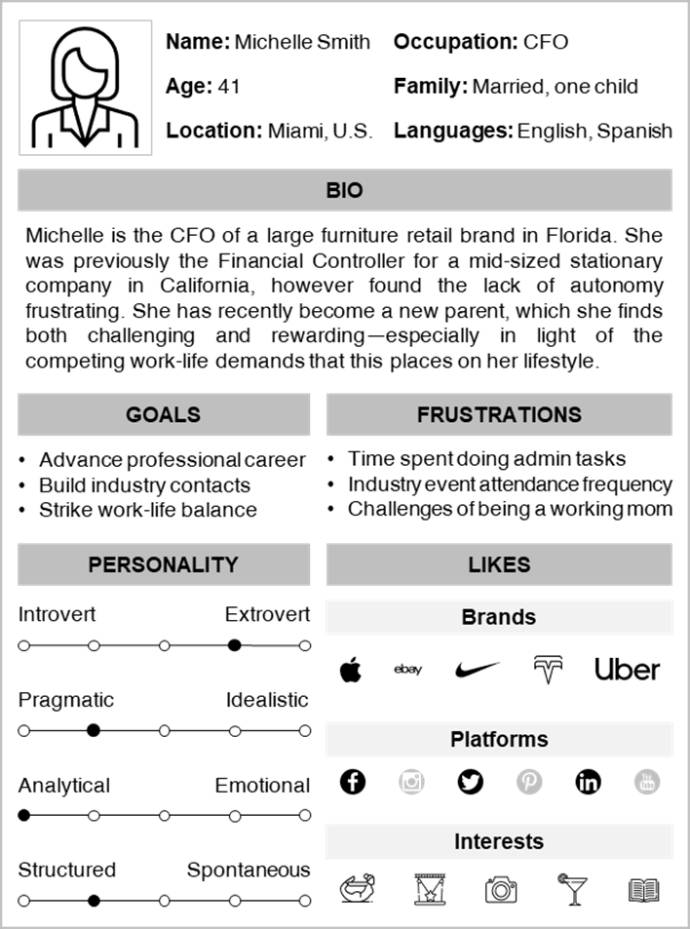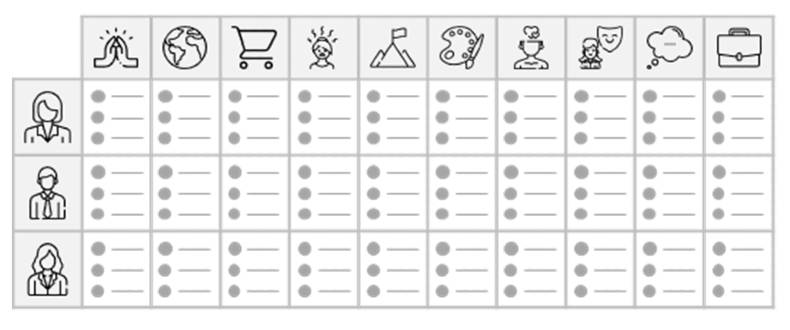Sales are the engine of your business, and the ability to make sales hinges on the value you provide to your customer. But who is your customer? And what does value actually mean?
First of all, there is no generic "customer."
There is Michelle, the CFO with three kids, who enjoys attending industry seminars and networking events. There is Greg, the managing director, who has a golfing obsession and who dreams of one day attending the Masters Tournament. There is Natalie, the CTO, who comes from a rich startup background and lives and breathes tech in both her personal and her professional lives.
All of those customers have distinct backgrounds, personalities, and interests. The combination of attributes of each of them shapes how effectively a given marketing message will resonate with them and when their personal buying drivers will be activated.
If you think about customers through a one-size-fits-all prism, you run the risk of diluting the nuances that can make the difference between people buying—and not.
Now, more than ever, traditional assumptions you might have held about your customers may be obsolete. Following COVID, there are new realities that everyone must contend with, and those apply especially to your customers. Your customers may carry new pain points that need to be addressed. They may possess new value drivers that need to be considered. They may act according to new behaviors and preferences that need to be recognized.
Building a richer understanding of your customers is the logical starting point for navigating through the challenges of the pandemic. (And it's exactly what I did at my business, Ringcommend, when attempting to overcome those challenges.)
That richer understanding is best achieved by creating buyer personas: avatars of your target customers that help to conceptualize them as real human beings with individualized needs and wants.
Buyer personas flip your modus operandi—from working backward to fit your business's offering onto customer needs, to working forward from your customer's needs to develop aligned offerings.

Buyer personas help you to better understand your customers—their pain points, wants, and needs. They enable you to make better decisions that cascade through all functions of your business.

So, how do you build buyer personas to better understand current and potential customers whose behaviors and attitudes have changed as a result of COVID?
Understand the attributes you want to capture
Your goal in developing buyer personas is to build a composite 360-degree snapshot of each of your target customer profiles. Such illustrative avatars should feel as "real" as possible. What is each person's professional background? What motivates his or her purchasing decisions? Where does each persona sit in the corporate hierarchy?
Use your personas to illuminate key demographic, psychographic, and behavioral attributes, such as these:
- Beliefs
- Background
- Frustrations
- Goals
- Hobbies
- Interests
- Personality
- Predispositions
- Preferences
- Work ethic
Build multiple personas for different customer profiles
Because it's unlikely you have only one type of buyer, it makes sense to segment your customers into different customer profiles. Without going overboard, your personas should be individualized to capture unique attributes that indicate the personal buying drivers of each segment.

To ensure that your buyer personas maintain relevance and utility, limit development to the smallest number of personas that still capture the diversity of your customer profiles.
Conduct customer interviews
The easiest way to develop buyer personas that mirror your real-life customers is to speak with your real-life customers!
Request the opportunity to interview people you think represent your quintessential target customers. In the absence of face-to-face interviews, consider gathering information via online surveys or questionnaires.
Involve your team
Aside from the customers themselves, few understand customers better than your team members. They deal with customers one way or another across all business functions—some with high frequency and multiple touchpoints.
When building personas, involve team members—especially those within the marketing, sales and product functions—who are able to provide customer insight.
Undertake independent research
Macro changes resulting from COVID might also be unearthed with fresh research and inquiry. That involves some good-old market research:
- Examining market reports
- Reading consumer review sites
- Analyzing your Web analytics data
Aggregate your research and interviews
Once you've collected all of the previous inputs, you'll be sitting on a ton of customer insights. That information needs to be consolidated and categorized into a meaningful structure to make it as easy as possible to build your personas.
Group and summarize information into relevant categories to make it simple and easy to transfer insights directly into personas.

Build a solid template
There's no "right way" to build a buyer persona template. The attributes you include in the template should simply be those that are necessary to achieve the overarching goal of gaining a snapshot that's representative of your real-life target customers.
Your persona templates should illuminate attributes that paint an illustrative picture of your target customer. You should feel capable of describing the customer as if they were a real person you know in real life.
A solid template should allow you to build personas for reference when making marketing and sales decisions that rely on your various customer profiles.
Humanize the abstract
Include humanizing elements in your template helps to translate abstract research into a lifelike avatar. Conceptualizing your customers with such humanized attributes will prove handy when using your personas for making real-world marketing and sales decisions.
Inevitably, your personas will not represent every customer relevant to your business; there will be natural variance from customer to customer. However, working with personas that compare to real human beings will make the decisions you make more authentic and reliable.
Be specific
Ensure that your personas get to the crux of who the target customer is. For example, if Michelle wants to purchase cost-effective solutions, her challenge shouldn't be just "getting value for money." Include more details, such as "procuring primary products that provide a sufficient return on investment of 5-10%."
Embed personas into your business
Once developed, personas should be shared among the entire team and embedded across all business functions. They should serve as a North Star for every business decision that involves your customers, especially for sales and marketing.
This article is an adapted excerpt from the book Coming Back From COVID: The Definitive Guide for Small Business Owners to Rapidly Recover From the Coronavirus.




